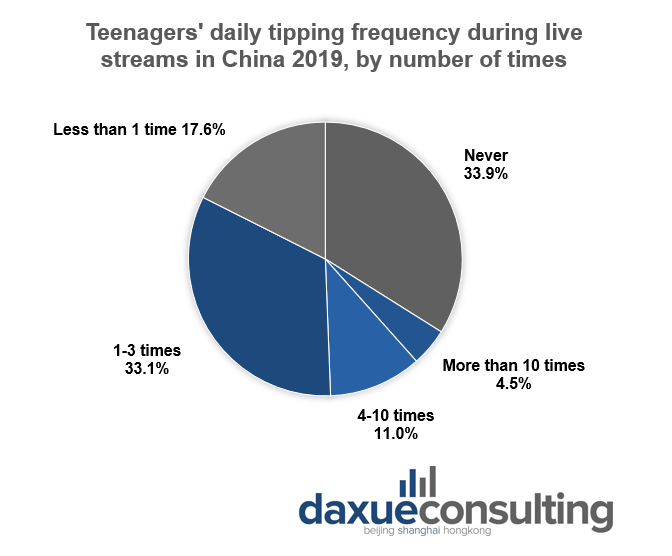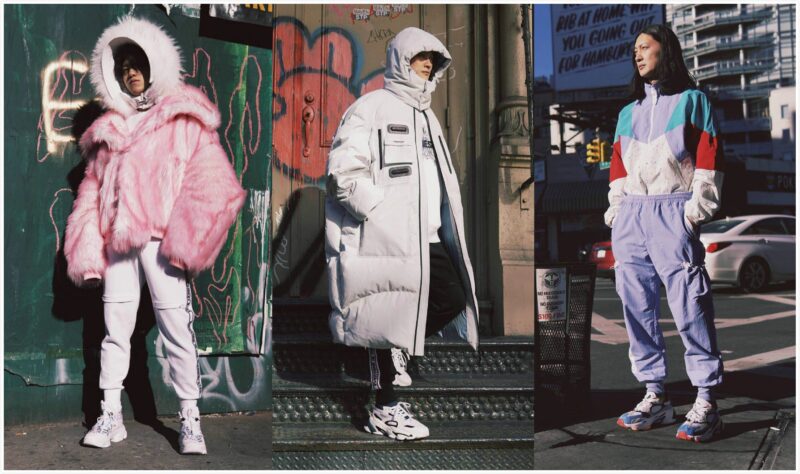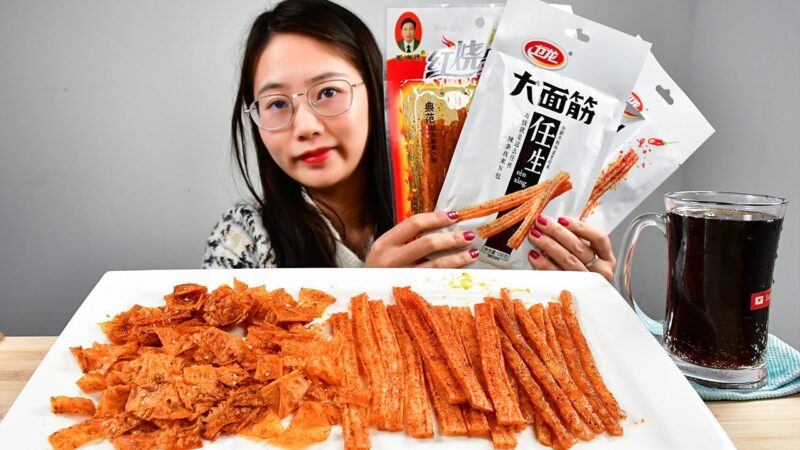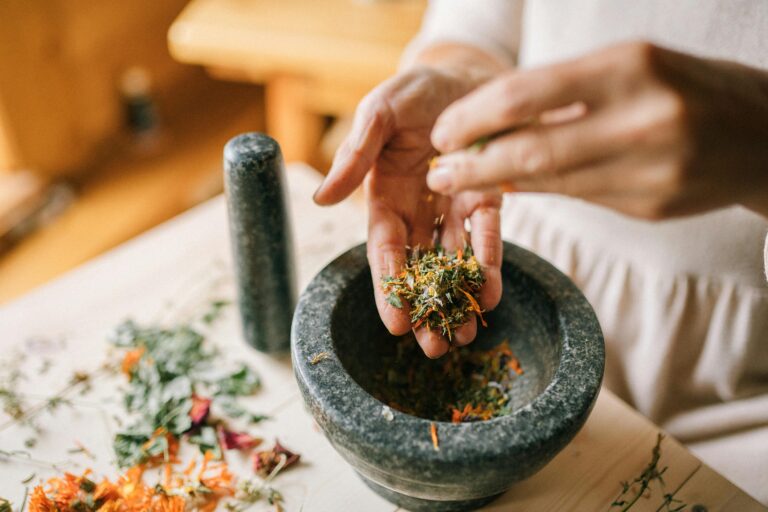Today’s Chinese teenagers were born during the one-child policy. The term “Little emperor syndrome” (小皇帝综合症) has been coined to label people born after 1980, since they have been receiving unrestrained attention and resources from parents and grandparents.
A 2019 interview conducted by McKinsey revealed that 2/3 of Chinese consumers born after the 1990s receive half their parents’ personal income per month as pocket money: for upper middle-class families this means over 4,000 RMB/month. Although still underage, they are a demographic with significant spending power that must not be ignored. Most of them belong to Chinese Gen Z.
For Chinese teenagers, a few clicks are all it takes
China’s e-commerce industry is the largest in the world. Due to the efficiency of online shopping in China, Chinese teenagers love doing shopping online- the most popular platforms being Alibaba’s subsidiaries: Tmall, with a market value of 230 billion RMB in 2021, and Taobao, with a market value of 170 billion RMB.
A unique feature of China’s e-commerce industry is livestream shopping. Livestream shopping is an e-commerce mode where the audience can directly purchase the items displayed by their favorite KOLs during their streaming session through clicking on a link. In 2021, Chinese Gen Z accounted for 34% of total livestream shoppers.

Guochao and streetwear as a lifestyle
Chinese Teenagers are proud of their heritage and culture- hence the great success of the Guochao or “national chic” wave. This trend depicts the “Made in China label” as something to be proud of and supports domestic brands that incorporate Chinese traditional elements in their designs.
Streetwear is another popular trend among Chinese teenagers. Influenced by the growing Chinese rap scene, and the US skate culture, urban style outfit photos are flooding social media and triggering sales for streetwear companies.
Li Ning and Anta managed to conquer the hearts of Chinese young consumers through surfing both Guochao and streetwear. It is not surprising that Chinese teenagers are crazy for such sportswear brands. Previously, Li Ning and Anta were facing fierce competition from foreign brands like Nike and Adidas, but after the Guochao trend took off, they have established themselves as important players in the Chinese fashion market.

Chinese teenagers love luxury
In 2022, Chinese Gen Z accounted for 15% of all luxury purchases in China. In fact, Chinese luxury consumers are much younger than their Western counterparts. They grew up being pampered during times of rapid economic growth in China and are willing to flaunt their wealth by wearing renowned labels.
Individualism is a major driver of purchase for luxury goods- Chinese teenagers want to reflect their personality and appear unique through their style. Indeed, over 51% of Chinese Gen Z show a preference for brands that customize and personalize products. It is important for brands who want to reach this demographic to keep this in mind.
Guochao makeup brands on the spotlight
Chinese teenagers tend to prefer Guochao brands when it comes to choosing makeup as well. Founded in 2017 in Hangzhou, Florasis (华西子) has become one of the most popular Chinese cosmetic brands.
Florasis has been capable of leveraging Chinese teenagers’ appetite for personalized and innovative products by pioneering the “user co-creation” product development model in China. Before any product enters the market, it is blind tested by a sample of selected customers. Although this process takes time, it guarantees that users will love newly released products. Furthermore, Florasis spends lots of resources on highly decorated packaging to improve user experience.

Last but not least, beauty brands hoping to sell to Chinese teenagers must find the correct KOLs to appoint as brand ambassadors. Florasis’ collaboration with the boyband “Teens in Times” (时代少年团) was a great success. As a result, 26% of Florasis consumers in 2019 were under 18. Teens in Times are what is referred to as “Little Fresh Meats” 小(鲜肉), handsome young males who attract a large female following and can be used to attract consumers.
Life is a game for Chinese youngsters
In 2020, 19.8% of Chinese adolescents were reported as internet addicted. They are addicted to games, particularly mobile games. In 2021, there were 655 million mobile gamers in China, of which 16% were students. Due to the increasing number of gamers in China, on August 2021, the National Press and Publication Association (NPPA) forbid spending over 3 hours a week playing videogames for under 18s, in an attempt to fight this growing addiction. The NPPA called this addiction “spiritual opium” and now only allows 1 hour a day of gaming (8pm-9pm) on Fridays, Saturdays, Sundays and public holidays. Gaming companies have no choice but to comply with these rules by not letting minors access the game beyond these hours.
In addition, after multiple stories of Chinese teenagers spending outrageous amounts of money on games, the Chinese government introduced spending caps allowing players between 8 and 16 to spend a maximum of 200 RMB per month, while those aged 16-18 can spend up to 400 RMB per month on videogames.
Although the frequency and amount of money they can spend in purchasing video games are limited, the number of gamers keeps on increasing every year. Therefore, gaming remains a lucrative industry.
It’s always snack time for adolescents
The Chinese snack market generated around 2.7 billion RMB in 2020 and it is expected to surpass 4 trillion RMB in 2025. Snacking is a social activity for Chinese teenagers, a way to strengthen relationships and bond with their friends. In addition, it is a way to reduce stress, and to make studying hours more bearable.
Milk tea (奶茶) is a very popular snack among Chinese teenagers. In 2019, milk tea shops made more than 140.5 billion RMB of sales. Yi Dian Dian and Coco are some of the most popular brands since they are affordable (all teas cost between 13 and 20 RMB/cup). The caffeine and sugar contained in milk tea gives teenagers the energy boost needed while studying, while the enjoyable taste makes drinking it a delightful experience.
Another popular snack for Chinese teenagers is Lay’s Potato Chips, due to their localized flavors inspired by Chinese cuisine, such as hot and sour fish soup flavor and cumin roasted lamb skewer flavor. The most popular flavors are the Lay’s classic potato chips, cucumber flavor, and tomato flavor. New limited-edition flavors are released often to capture the attention of Chinese adolescents. Moreover, tasting different flavors of Lay’s potato chips is also a social activity between friends.
Lastly, Latiao (spicy stick) are currently one of Chinese teenagers’ most beloved snacks. They consist of chewy stripes made of cooked and seasoned flour and spicy oil. Latiao is often featured in Mukbangs. Mukbang videos, otherwise called “Chibo” (吃播) in China, are videos of vloggers, usually skinny, effortlessly eating huge portions of food, with microphones to amplify their chewing sounds which are posted on social media sites like Bilibili. There is a big culture of snacking among adolescents in China. To bond with friends, obtain energy for studying or simply entertain themselves, a snack is the perfect companion.

Unraveling the needs of Chinese teenagers
- Today’s teenagers in China were born under the one-child policy, thus are spoiled by their parents and grandparents and this translates into high spending power.
- They prefer to shop online, especially through livestreams and during shopping festivals like Double 11 Shopping festival.
- They prefer to shop domestic brands which reflect their culture when it comes to apparel and cosmetics.
- Streetwear and luxury fashion are huge trends currently.
- Collaborating with KOLs and “Little Fresh Meats’ is the best way to promote your brand to teenagers in China.
- Adolescents in China love gaming so much that the government had to restrict it to 1 hour a day during weekends and national holidays.
- In addition, the government limited how much money minors are allowed to spend per month on games.
- Beyond being a powerful stress reliever, snacking is a significant social glue for teenagers in China.
Author: Nefeli Georgiou





